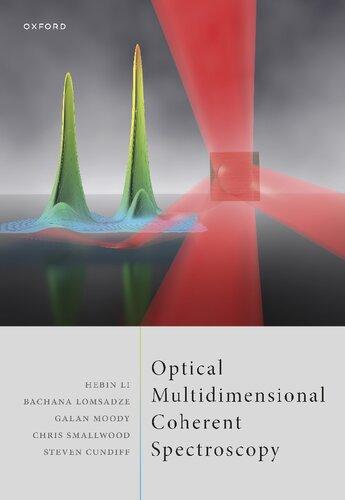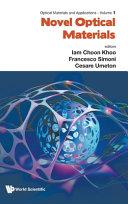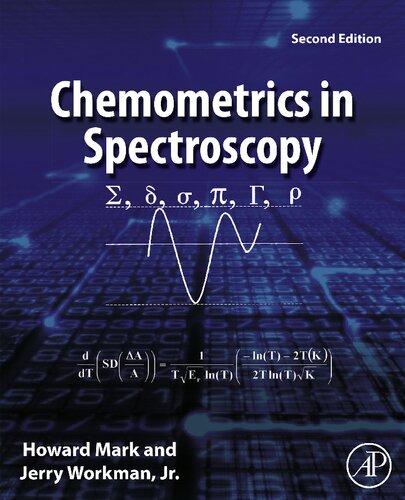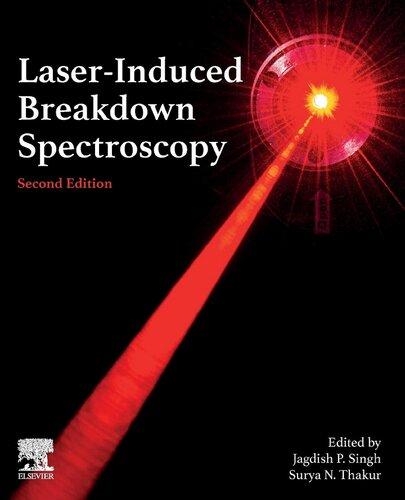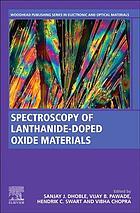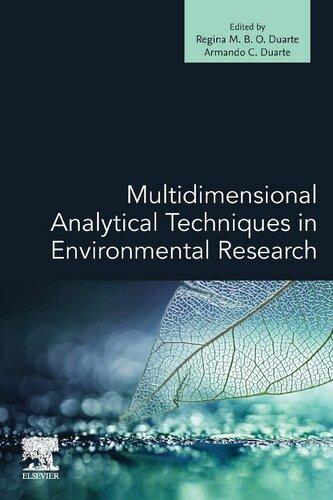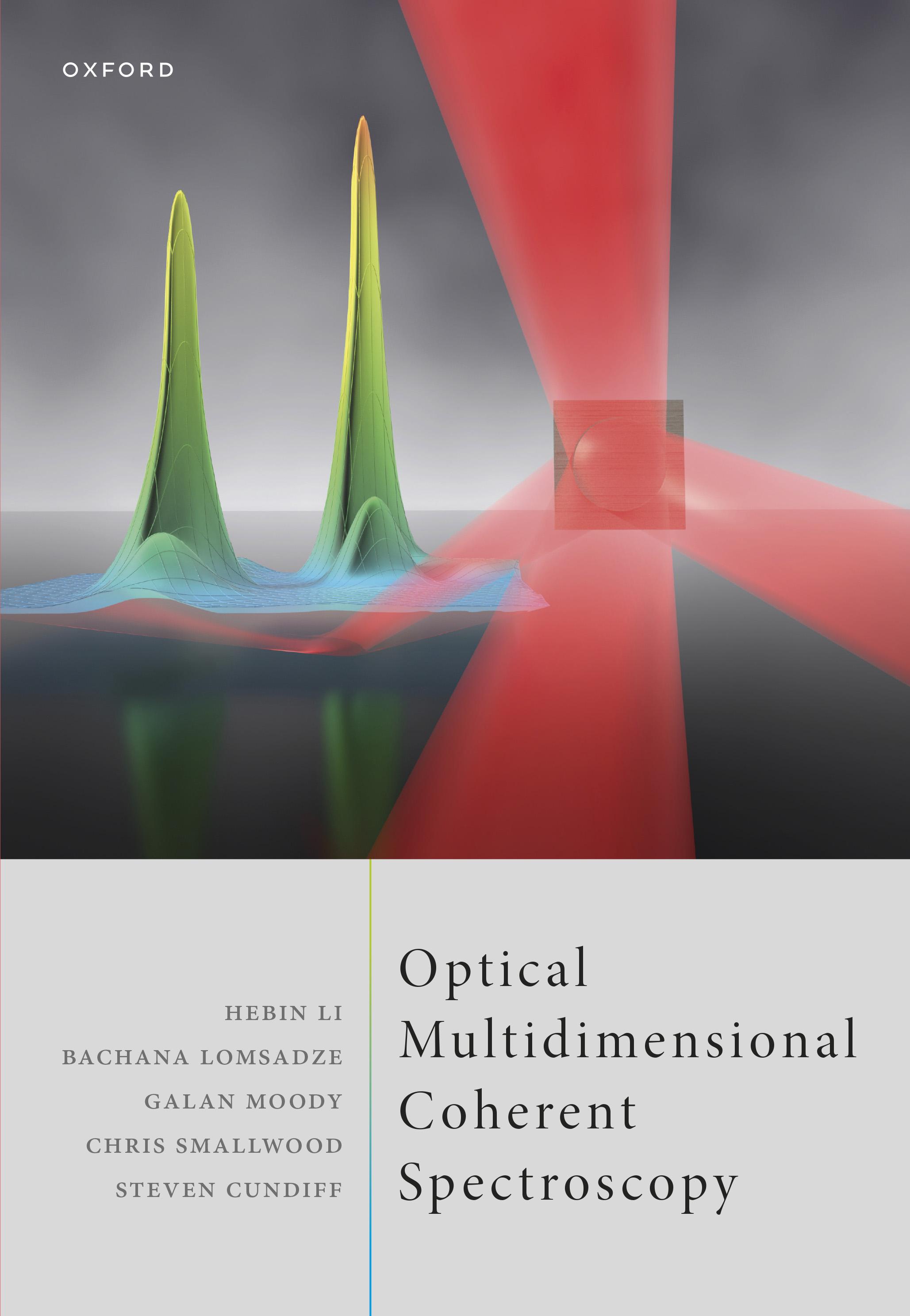OpticalMultidimensional CoherentSpectroscopy
HEBINLI
FloridaInternationalUniversity
BACHANALOMSADZE
SantaClaraUniversity
GALANMOODY
UniversityofCaliforniaSantaBarbara
CHRISTOPHERL.SMALLWOOD
SanJoseStateUniversity
STEVENT.CUNDIFF
UniversityofMichigan
GreatClarendonStreet,Oxford,OX26DP, UnitedKingdom
OxfordUniversityPressisadepartmentoftheUniversityofOxford. ItfurtherstheUniversity’sobjectiveofexcellenceinresearch,scholarship, andeducationbypublishingworldwide.Oxfordisaregisteredtrademarkof OxfordUniversityPressintheUKandincertainothercountries ©HebinLi,BachanaLomsadze,GalanMoody,ChristopherL.Smallwood, andStevenT.Cundiff2023
Themoralrightsoftheauthorshavebeenasserted Allrightsreserved.Nopartofthispublicationmaybereproduced,storedin aretrievalsystem,ortransmitted,inanyformorbyanymeans,withoutthe priorpermissioninwritingofOxfordUniversityPress,orasexpresslypermitted bylaw,bylicenceorundertermsagreedwiththeappropriatereprographics rightsorganization.Enquiriesconcerningreproductionoutsidethescopeofthe aboveshouldbesenttotheRightsDepartment,OxfordUniversityPress,atthe addressabove
Youmustnotcirculatethisworkinanyotherform andyoumustimposethissameconditiononanyacquirer
PublishedintheUnitedStatesofAmericabyOxfordUniversityPress 198MadisonAvenue,NewYork,NY10016,UnitedStatesofAmerica
BritishLibraryCataloguinginPublicationData Dataavailable
LibraryofCongressControlNumber:2023930434
ISBN978–0–19–284386–9
DOI:10.1093/oso/9780192843869.001.0001
Printedandboundby CPIGroup(UK)Ltd,Croydon,CR04YY
LinkstothirdpartywebsitesareprovidedbyOxfordingoodfaithand forinformationonly.Oxforddisclaimsanyresponsibilityforthematerials containedinanythirdpartywebsitereferencedinthiswork.
Wededicatethisbooktoourfamilieswhohadtoputupwithourabsencewhilewe wroteit.
Preface
Ultrashortopticalpulses,withdurationrangingfromafewpicosecondsdowntoafew femtoseconds,havebeenusedtostudydynamicsinmattersincepulsedlaserswere firstdevelopedinthe1960s.Indeed,thisresearchareahasbeenoneofthedrivers forimprovementsinthefieldultrafastoptics,suchasreductionsinpulseduration. Thefieldofusingultrashortlightpulsestoprobedynamicalprocessesinmatteris generallyknownas“ultrafastspectroscopy.”
Beginninginthelate1990s,thefieldofultrafastspectroscopyunderwentarevolutionduetotheintroductionofmultidimensionalcoherentspectroscopybasedon conceptsoriginallydevelopedinnuclearmagneticresonancespectroscopy.Giventheir power,multidimensionalcoherentmethodsarebecomingthedominantultrafastspectroscopictechniques.
Thisbookpresentsopticalmultidimensionalcoherentspectroscopymethodsand theirapplicationtosystemsandmaterialsthatfallprimarilywithinthefieldofphysics. Thesystemsincludeatomicvaporsandsolids—particularlysemiconductorsandsemiconductornanostructures.Multidimensionalcoherentspectroscopyintheinfraredand visiblespectralregionshasbeenmoreextensivelyusedtostudymolecules.Astheapplicationofmultidimensionalcoherentspectroscopytomolecularsystemshasbeen coveredbyotherbooks,wehavechosentonotrepeatthatcoveragehere.Rather,we seektobroadenthecoveragebyaddressingapplicationsthatarelargelynotcovered elsewhere.
Webeginbyprovidinganintroductionofmultidimensionalcoherentspectroscopy forresearchersinallfields,whetherornottheyhaveabackgroundinultrafastspectroscopy,oreveninopticalspectroscopymoregenerally.Wethenfocusontheuseof thetechniquetoprobesystemsthatareprimarilyofinterestinthefieldsofphysics andmaterialsscience.Ourgoalistoillustratetheinformationthatmultidimensional coherentspectroscopycanprovideanditsadvantagesoverothermethods.Todoso, wefocusonseveralexemplarymaterials,butalsoaimtoillustratethetechnique’s broaderapplicability.
Acknowledgements
WeacknowledgeallofthoseindividualswhohaveworkedorcollaboratedwithusondevelopingandusingmultidimensionalcoherentspectroscopyincludingDiogoAlmeida, TravisAutry,WanKiBae,ManfredBayer,CameliaBorca,AlanBristow,Xingcan Dai,MatthewDay,DenisKaraiskaj,IrinaKuznetsova,Xiaoqin(Elaine)Li,Albert Liu,TorstenMeier,RichardMirin,EricMartin,ShaulMukamel,Ga¨elNardin,Lazaro Padilha,MartenRichter,MarkSiemens,KevinSilverman,RohanSingh,BoSun, TakeshiSuzuki,PeterThomas,AndreasWieckandTianhaoZhang.STCwouldlike toacknowledgethesustainedfundingforresearchonthistopicfromtheDOEAtomic, MolecularandOpticalScienceprogramandNSFfundingthroughtheJILAPhysics FrontierCenter.
Tableofsymbols
Symbol DescriptionSection
A cross-sectionalinteractionarea3.1
a0 Bohrradius5.3
aB excitonBohrradius9.1
ˆ B/ ˆ B† excitonannihilation/creationoperator5.3
C probabilityamplitude1.4
Ci ith Londondispersioncoefficient5.3
c speedoflightinvacuum1
D spatialdiffusioncoefficient1.3
Dα(x,y,z) double-sidedFeynmandiagramequation3.1
E(t) totalelectricfieldinthetimedomain1.2
ˆ
E(t) complex-valued,slowlyvaryingcomponentof E(t)1.2
E(t) phasordescriptionof E 2.3.3
E0 real-valuedelectricfieldamplitude1.2
EB biexcitonenergy9.1
Ee single-particleelectronenergy9.1
Eh single-particleholeenergy9.1
En energydifferencebetweentwoquantumstates1
Esignal radiatedelectricfieldfrompolarization2.3.3
EX excitonenergy9.1
F{...} Fouriertransformoperation1.2
E(ω) totalelectricfieldinthefrequencydomain1.2
E0 electricfieldpulsearea1.2
f0 comboffsetfrequency6.1
fCE carrier-envelopeoffsetfrequency4.4
fn frequencyof nth combtooth6.1
frep laserrepetitionrate4.4
G(ω) Fouriertransformof g(t)intothefrequencydomain3.2
g(t) Gaussiandistributionfunctioninthetimedomain3.10
H Hamiltonianoperatorofasystem1.4
H0 unperturbedHamiltonianoperatorofasystem1.4
h Planck’sconstant, h =6 62607015 × 10 34 J·s1
ℏ reducedPlanckconstant, ℏ = h/2π 1.4
I opticalintensity1.2
ISI spectralinterferogramintensity4.3
I electricfieldpowerspectruminthefrequencydomain1.2
Jmn one-excitoncouplingstrengthbetweenexcitons m and n 5.3
Kmn two-excitoncouplingparameter5.3
x Tableofsymbols
k wavevectoroflight, k =2π/λ
L samplelength1.3
LB potentialbarrierwidth9.1
Lc lasercavitylength6.1
Lmin minimumpotentialbarrierwidthforconfinement9.1
mc conductionbandeffectivemass7.1
me electronmass7.1
mhh heavyholebandeffectivemass7.1
mlh lightholevalencebandeffectivemass7.1
N integernumberpulses,datapoints,etc.4.4
N particledensity5
Np numberofparticles5.4 n refractiveindex1.1
ˆ O⟩ expectationvalueofoperator ˆ O
P dielectricpolarizationdensity1.1
Pψ probabilityofbeinginstate |ψ⟩
Q(x) probabilitydistributionfunction3.2
R inter-atomicseparationdistance5.3
rc correlationparameter6.4
T delaybetweensecondandthirdpulses1.3
T0 opticaltransmission1.3
T1 excitedstatepopulationlifetime3.1
T2 excited/groundstatecoherencetime3.1
T ∗ 2 ensembledephasingtime3.2
Trep laserrepetitionperiod4.4
t signalemissiontime1.3
V interactionHamiltonian1.4
V (R) long-rangeatomicinteractionpotential5.4
V0 potentialbarrierheight9.1
vgr groupvelocity6.1
vph phasevelocity6.1
vs translationstagevelocity4.4
W populationinversionbetweenquantumstates1.4
Xhh heavyholeexciton7.1
Xlh lightholeexciton7.1
α0 absorptioncoefficient1.3
β opticalfrequencychirpparameter1.2
∆1 singlyexcitedstateinteractionshift6.4
∆2 doublyexcitedstateinteractionshift6.4
∆B biexcitonbindingenergy9.1
∆T changeinopticaltransmission1.3
Tableofsymbols xi
∆ϕce carrier-envelopephase-slip6.1
∆X excitonbindingenergy7.1
δ(t) Diracdeltafunction2.3.1
δt temporalintensitypulseduration1.2
δte temporalintensity e 1 halfwidth1.2
δte2 temporalintensity e 2 halfwidth1.2
δtFWHM temporalintensityfull-widthathalfmaximum1.2
δU spectralintensitybandwidthinenergy1.2
δα0 changeinabsorptioncoefficient1.3
δκ spectralintensitybandwidthinwavenumbers1.2
δλ spectralintensitybandwidthinwavelength1.2
δν spectralintensitybandwidthinfrequency1.2
δω spectralintensitybandwidthinangularfrequency1.2
δωe spectralintensity e 1 halfwidth1.2
δωe2 spectralintensity e 2 halfwidth1.2
δωFWHM spectralintensityfull-widthathalfmaximum1.2
ϵ0 vacuumpermittivity3.1
Γ relaxationoperator1.4
Γ10 excitedstatepopulationdecayrate3.1
Γgr gratingrelaxationrate1.3
Γpop populationrelaxationrate1.3
γ dephasingrate/homogeneouslinewidth1.3
γ10 excited/groundstatedecoherencerate3.1
γij imaginarypartofresonancefrequencybetweenstates i and j 2.3.1
γph puredephasingrate1.4
γt singlequantumdephasingrate6.4
γτ doublequantumdephasingrate6.4
Θ(x) Heavisidestepfunction1.3
θ anglebetweenbeams1and21.3
ϑ Blochspherepolarangle1.5
Λ spatialgratingperiod1.3
λ wavelengthoflightinvacuum1
µ electricdipolemoment1.4
ν frequencyoflight1
ν∗ differencefrequencybetweensignalandCWreferencelaser4.4
π mathematicalconstant π ≈ 3.14151.1
ρ densitymatrixoperator1.4
σ N -particlespectraldistributionwidth3.2
τ delaybetweenfirstandsecondpulses1.3
τex two-leveltransitionexcited-statelifetime1.3
χ electricsusceptibility1.1
xii Tableofsymbols
ϕ opticalphase1.2
ϕS,R phaseofsignal/referenceelectricfield4.3
φ Blochsphereazimuthalangle1.5 |ψ⟩ quantummechanicalwavefunction1.4
Ωij complexresonancefrequencybetweenstates i and j
Ωr Rabifrequency1.4
ω opticalangularfrequency1.2
ω0 resonantangularfrequencyofanopticaltransition3.2.1
ωc carrierangularfrequencyofalaser1.2 ωij realpartofresonancefrequencybetweenstates i and j
Tableofacronyms
Acronym Description
2DCS two-dimensionalcoherentspectroscopy
2DES two-dimensionalelectronicspectroscopy
AOM acousto-opticmodulator
BS beamsplitter
◦C degreesCelsius
c.c. complexconjugate
CAD computer-aideddesign
CB conductionBand
CCD charge-coupleddevice
CP compensationplate
CQD colloidalquantumdot
CVD chemicalvapordeposition
CW continuouswave
DBR distributedBraggreflector
DCM dichroicmirror
DCS dual-combspectroscopy
DDS direct-digitalsynthesizer
DFT discreteFouriertransform
DQW doublequantumwell
DSP digitalsignalprocessor
EID excitationinduceddephasing
EIS excitationinducedshift
ESE excited-stateemission
FFT fastFouriertransform
FPGA fieldprogrammablegatearray
FTIR Fourier-transforminfrared
FWHM full-widthathalf-maximum
GNE goldnanoelectrode
GSB ground-statebleaching
HeNe helium-neon
hh heavyhole
HWP half-waveplate
IFQD interfacefluctuationquantumdots
IR infrared
lh lighthole
LO localoscillator
LP lowerpolariton
xiv Tableofacronyms
MAPI MethylammoniumLeadIodide
MBE molecularbeamepitaxy
MDCS multi-dimensionalcoherentspectroscopy
MONSTR multidimensionalopticalnonlinearspectrometer
MQC multi-quantumcoherence
NA numericalaperture
NMR nuclearmagneticresonance
NW narrowwell
OD opticaldensity
PBS polarizingbeamsplitter
PL photoluminescence
PLE photoluminescenceexcitation
PZT piezoelectrictransducer
QD quantumdot
QW quantumwell
RBM radialbreathingmode
RF radiofrequency
SAQD self-assembledquantumdot
SERS surface-enhancedRamanspectroscopy
SNR signal-to-noiseratio
SR-TFWM spectrallyresolvedtransientfour-wavemixing
STM scanningtunnelingmicroscope
SWNT single-walledcarbonnanotube
TBP time-bandwidthproduct
TC lock-inamplifiertimeconstant
TCS tri-combspectroscopy
TFWM transientfour-wavemixing
TI-TFWM time-integratedtransientfour-wavemixing
TMD TransitionMetalDichalcogenide
Tr traceofalinearoperator
TR-TFWM time-resolvedtransientfour-wavemixing
UP upperpolariton
VB valenceband
WW widewell
ZPL zerophononline
Contents
1Basicsofultrafastspectroscopy 1
1.1Basicsofspectroscopy:linearversusnonlinear2
1.2Ultrashortpulses6
1.3Ultrafastnonlinear/coherentspectroscopy10
1.4Thedensitymatrix15
1.5Blochsphererepresentationofquantumstates20
2Introductiontomultidimensionalcoherentspectroscopy 23
2.1Conceptsofmultidimensionalcoherentspectroscopy24
2.2Spectrumclassification29
2.3Densitymatrixformalismanddouble-sidedFeynmandiagrams32
2.4Phasematching43
2.5Two-dimensionalinfrared(2DIR)spectroscopy44
3Interpretationofmultidimensionalcoherentspectra 45
3.1Isolatedtwo-levelsystem45
3.2Inhomogeneouslybroadenedensembleoftwo-levelsystems49
3.3Coherentcouplingsignatures55
3.4Incoherentcouplingsignatures57
3.5Doublyexcitedstatesandmany-bodyinteractions58
3.6Double-quantumspectra62
3.7Zero-quantumspectra65
3.8Three-dimensionalcoherentspectroscopy67
3.9Nonrephasingpathwaysandpurelyabsorptivespectra67
3.10Finite-pulseeffects68
4Experimentalimplementations 77
4.1Experimentalrequirementsandconsiderations77
4.2Overviewofexperimentalapproaches80
4.3Activelystabilizedboxgeometry81
4.4Phasemodulatedcollineargeometry89
4.5Comparisonofdifferentapproaches97
4.6Dataanalysis97
5Multidimensionalcoherentspectroscopyofatomicensembles 101
5.1Single-andzero-quantum2Dspectraofatomicvapors102
5.2MDCSinopticallythicksamples108
5.3Probingmany-bodyinteractionswithdouble-quantum2Dspectroscopy112
Contents
5.4Probingmany-bodycorrelationswithmulti-quantum2Dspectroscopy121
6Frequencycomb-basedmultidimensionalcoherent spectroscopy 127
6.1Introductiontofrequencycombsanddual-combspectroscopy128
6.2Frequencycomb-basedfour-wave-mixingspectroscopy130
6.3Frequencycomb-basedsingle-quantum2Dspectroscopy135
6.4Frequencycomb-baseddouble-quantum2Dspectroscopy139
6.5Tri-combspectroscopy144
7Two-dimensionalspectroscopyofsemiconductorquantum wells 151
7.1Introductiontosemiconductoroptics152
7.2Many-bodysignaturesinone-quantum2Dspectra154
7.3Many-bodysignaturesindouble-andmulti-quantum2Dspectra161
7.4Two-dimensionalspectroscopyofcoupledquantumwells165
7.5Quantumwellexciton-polaritonsinmicrocavities168
8Three-dimensionalcoherentspectroscopy 171
8.1Fifth-order3Dinfraredspectroscopy172
8.2Fifth-order3Delectronicspectroscopy173
8.3Third-order3Delectronicspectroscopy174
8.43Dcoherentfrequencydomainspectroscopy191
9Two-dimensionalspectroscopyofsemiconductorquantum dots 193
9.1Opticalandelectronicpropertiesofquantumdots193
9.22DcoherentspectroscopyofGaAsquantumdots197
9.32Dspectroscopyofself-assembledIn(Ga)Asquantumdots202
9.4Coherentcontrolofquantumdots205
9.5Two-dimensionalspectroscopyofcolloidalquantumdots207
10Two-dimensionalspectroscopyofatomicallythin2D materials 213
10.1Introductionto2Dmaterials213
10.2Homogeneouslinewidthin2Dmaterials214
10.3Valleycoherenceandcouplingin2Dmaterials217
11Otherapplicationsofmulti-dimensionalcoherentspectroscopy inPhysics 223
11.1Semiconductingcarbonnanotubes223
11.2Colorcentersindiamond225
11.3Perovskitematerials228
12Newtrendsinmultidimensionalcoherentspectroscopy 235
12.1Broadeningthespectralrange:fromterahertztox-rays235
12.2Improvingthespatialresolution237
Basicsofultrafastspectroscopy
StartingfromIssacNewton’suseofaprismtoobservethespectrumofsunlight,optical spectroscopistshavebeenstrivingtofurtherourunderstandingofmatterbystudying howitabsorbsandemitslight.SpectroscopictechniquesremainedfundamentallyunchangedforcenturiescomparedtoNewton’smethod.Lightwasdispersedbyaprism ordiffractiongratingandtheintensitywasmeasuredasafunctionofangle,whichcan bemappedintowavelength.Changesinthespectralintensitycanberelatedtoeither inherentpropertiesofthesourceorthelightpassingthroughamediumthatabsorbs atspecificwavelengths.Theabsorptionoremissionwavelengthcanbeconvertedtoa frequencythrough c = λν where c isthespeedoflight, λ isthewavelengthofthelight and ν isitsfrequency.Usingthequantummechanicalrelationbetweenenergy, En,and frequency, En = hν,where h isPlanck’sconstant,thefrequencycanbeunderstood astheenergydifferencebetweentwoquantumstatessuchaselectronicorvibrational states.
Beforetheinventionofthelaser,spectroscopicmeasurementswereallperformedin thelinearregimewherethematerialpropertiesareindependentoftheintensityofthe light.Inthisregimetheelectricfieldofthelightisweakcomparedtotheinternalfields oftheatomormolecule.Alasercanproducelightthatisnolongerweakcomparedto theinternalfieldsofanatomormolecule,thustheinventionofthelaserbroughtthe fieldofopticalspectroscopyintoaneweraofnonlinearspectroscopy.Inthenonlinear regime,thematerialpropertiesarenolongerindependentofthelightintensity,signals scalewithahigherpowerofthelaserintensity,andtwolaserbeamscaninteractina sample.Forinstance,astrongpumpbeamcansaturateanabsorptionresonanceand thusincreasethetransmissionofaweakerprobebeam.Also,wave-mixingofmultiple lightfieldsinthesamplecanleadtoasignalbeamwithanentirelynewdirectionand frequency.
Opticalspectroscopicmeasurementscanalsobemadenotasafunctionofwavelengthbutratheroftime.Time-domainspectroscopyisanalogoustotheideaofastroboscope,inthatshortflashesoflightcancapturestop-actionimagesofultrafastdynamicssuchasachemicalreactionorchargecarriersrelaxinginasolid.Measurements madeinthetimedomainusinglaserpulsescanbeconvertedintofrequency-domain spectrausingaFouriertransform.Ingeneral,thetime-domainspectracanbefunctionsofmultipletimedelays,sotheresultingfrequency-domainspectraarefunctions ofmultiplefrequenciesandthusaremultidimensional.TheconceptofmultidimensionalFouriertransformspectroscopywasdevelopedinnuclearmagneticresonance (NMR)[108]andisnowtransformingthefieldofultrafastlaserspectroscopy.
Basicsofultrafastspectroscopy
Multidimensionalcoherentspectroscopyhasanumberofadvantagesoverother typesofspectroscopy,includingone-dimensionalmethodsandmultidimensionalmethodsthatarenotcoherent.Atthesametime,multidimensionalcoherentspectroscopy ischallengingtoexperimentallyimplementintheopticalportionoftheelectromagneticspectrumduetotheneedtousephase-relatedlightpulsestoexcitethesample andtomeasurethephaseoftheemittedlightsignals.
Tosetthestagebeforediscussingmultidimensionalcoherentmethods,inthischapterwewillreviewseveralultrafastspectroscopicmethods,bothbecausetheyserveas thefoundationfromwhichmultidimensionalcoherentmethodsweredeveloped,and theyprovidecontextfordescribingtheadvantagesofmultidimensionalcoherentmethods.InChapter2wewillintroducethebasicconceptsinvolvedinmultidimensional coherentspectroscopy,followedbyanin-depthdiscussionofhowtointerpretmultidimensionalcoherentspectrainChapter3.Chapter4willreviewseveralexperimental implementations,describinghoweachovercomestheaforementionedchallenges.
1.1Basicsofspectroscopy:linearversusnonlinear
Thefieldofspectroscopyinvolvesmeasuringaspectrumthatdisplaysthefrequency (spectral)dependenceoftheinteractionbetweenmatterandelectromagneticradiation. Theelectromagneticradiationmaybeincidentonthematterfromanexternalsource, oritmaybeemittedbythematter.Inthisbook,wewilldiscusstheformercase.
Whenanelectromagneticfieldisincidentonmatter,itdisplacestheelectronsor ionsinthematterfromtheirequilibriumpositions,producingapolarizationinthe matterthatinturnradiatesanewelectromagneticfield.Treatingthepolarizationasa drivingterminMaxwell’sequationsandtakingthefar-fieldlimitgivestheresultthat thephaseofthereradiatedfieldlagsthephaseofthepolarizationby90◦ (afactorof i incomplexphasornotation).Theinterferenceofthisreradiatedfieldwiththeincident fieldresultsinmodificationofthefieldduetopropagationthroughthematter,which isusuallyattributedtomaterialpropertiessuchasanindexofrefractionorabsorption.
Inlinearspectroscopy,theincidentelectromagneticfieldisweakandtheinduced polarizationislinearlyproportionaltotheincidentfield.Foracontinuouswave(CW) incidentfield,thepolarizationwillhavethesamefrequencyandwavevectorasthe incidentfield.However,thephaseofthepolarizationwithrespecttotheincidentfield dependsonfrequencyifresonancesarepresentinthematerial.First,weconsideronly asingleresonanceasthesimplestexample.
Ifthefrequencyoftheincidentfieldissignificantlybelowtheresonantfrequency, thentheinducedpolarizationwillbein-phasewiththeincidentfieldandthereradiated fieldwillbe90◦ outofphaseinthefarfieldduetoaforementionedfar-fieldphaselag. Sincethepolarizationhasthesamewavevectorastheincidentfield,thereradiated fieldwillpropagateinthesamedirection,soadetectorplacedafterthesamplewill detectthesumoftheincidentfieldandthereradiatedfield.Ifthereradiatedfieldis weakcomparedtotheincidentfield,thedominantresultwillsimplybeaphaseshift ofthetransmittedfieldcomparedtotheincidentfield,asillustratedinFig.1.1(a) [notethat eikx + iδeikx ≈ ei(kx+δ) forsmallvaluesof δ,where k =2πn/λ].Thisphase shiftisconsistentwithatransparentmaterialwithanindexofrefraction n.
Fig.1.1 Sketchoflinearspectroscopyshowingincidentfieldsandreradiatedfieldsinthe vicinityofanopticalresonance. (a) Belowresonance. (b) Onresonance. (c) Aboveresonance. (d) Frequencydependenceofthecomplexpolarization,intermsofamplitudeandphase(top) andrealandimaginaryquadratures(bottom).
Ifthefrequencyoftheincidentfieldistunedsothatitisontheresonancein thesample,thephaseofthepolarizationwilllagthatoftheincidentfieldby90◦ . Togetherwiththefar-fieldphaseshift,thenetresultwillbethatthereradiatedfield willbe180◦ outofphasewiththeincidentfieldandtheywillexperiencedestructive interferencewhenmeasuredtogether,assketchedinFig.1.1(b).Thisdestructiveinterferencemeansthatalowertransmittedintensityismeasured,asexpected,because theincidentfieldisnowbeingabsorbedbythesamplesinceitisonresonance.
Tuningthefrequencyoftheincidentfieldtobeaboveresonanceresultsinasituationsimilartobelowresonance,justaphaseshiftofthetransmittedfield,although thephaseshiftisintheoppositedirection,asshowninFig.1.1(c).
Takenasawhole,thissimplifiedpictureofabsorptionspectroscopyisusefulbecauseitemphasizestheimportanceoftherelativephasebetweentheincidentfieldand theinducedpolarization:itisallthedifferencebetweenamaterialbeingtransparent butcausingaphaseshiftofthetransmittedlightandthematerialabsorbingthelight andresultinginlesslightbeingtransmitted.Theabilitytomeasurethephaseofthe polarizationwithrespecttotheincidentfieldscanbeimplementedinmultidimensional coherentspectroscopy,andityieldsimportantinformationabouthowthematerialis respondingtotheincidentlight.
Thecompletefrequencydependenceofthematerialpolarizationinthevicinityof theresonanceisdepictedinFig.1.1(d),dividedintocomplexamplitudeandphase componentsattopandintorealandimaginaryquadraturesonbottom.Thequadra-
turedepiction,inparticular,exhibitsanumberofimportantfeaturesthatwillserveas usefulreferencepointsforthenonlinearmultidimensionalspectrathatwillbediscussed inmuchoftherestofthisbook.Asmentionedabove,whenthepolarizationsignalis bothsmallandprimarilyreal-valued,thedominanteffectontheemittedsignalisa changeinphase.Infact,therealpartofthepolarizationremainscloselyconnected tophaseshiftsintheopticalfieldregardlessofwhatimaginarypartiftheoverall reradiatedsignalamplituderemainssmallincomparisontotheincidentfield.Because thesephaseshiftsaredifferentforlightatdifferentfrequencies,thequadratureisvery oftenreferredtoinspectroscopyliteratureasthepolarization’s“dispersive”component.Likewise,thepolarization’simaginarycomponentbearsastrongresemblance tothematerial’sabsorptionpropertiesandassuchisfrequentlytermedthesignal’s “absorptive”component.Intermsofthereradiatedfield—whichisthemostcommonlyexaminedquantityinMDCS—thedispersivecomponentshiftsintothesignal’s imaginaryquadratureandtheabsorptivecomponentshiftsintotherealquadrature.
Thisdiscussionhasdescribedasimplespectroscopyexperiment,namelysweepingthefrequencyofanelectromagneticfieldincidentonasampleandmeasuringthe transmittedintensity.Ifadipinthetransmittedintensityisobservedataspecific frequencyitindicatesthepresenceofresonance;thewidthoftheresonancecharacterizesthedampingoftheresonance.However,thereareimportantambiguitiesinlinear spectra,namelytheinabilitytodistinguishbetweenhomogeneousandinhomogeneous broadeningandtheinabilitytodetermineiftworesonancesarecoupledoruncoupled.
Typicallythesampleisanensembleofmanysystems,whethertheyareatomsundergoingelectronictransitions,moleculesundergoingvibrationaltransitions,ornuclei flippingtheirspins.Ifallthesystemsintheensembleareidentical,i.e.,theyhavethe sameresonantfrequencyandsamelinewidth,theensembleisdesignatedasbeing“homogeneouslybroadened”;however,thismaynotnecessarilybethecase.Inparticular, theremaybeadistributionofresonantfrequenciesduetoeffectssuchastheDoppler shiftinavapor,randomcrystalfieldsinanion-dopedsolidorstructuraldisorderina nanostructure.Inthiscase,thelinewidthofthemeasuredresonancemayhavenothing todowiththelinewidthoftheindividualmembersoftheensemble,butratherreflectsthedistributionofresonancefrequencies.Thiscaseisknownas“inhomogeneous broadening.”
Thelinearspectrumofaninhomogeneouslybroadenedensemblewillhavearesonancefeature(theabsorption“line”)thathasawidththatischaracteristicofthe inhomogeneousdistribution,notthedampingoftheindividualmembersoftheensemble.Whilebothareusefultoknow,theyprovidequitedifferentinformation.The widthintheabsenceoftheinhomogeneousbroadening,oftencalledthe“homogeneouswidth”providesinformationaboutprocessesthatinterrupttheoscillations,for examplecollisionsandradiativedecay.
Thereisalsoanambiguityinlinearspectroscopyiftworesonancesareobservedin alinearspectrum.Therearetwopossiblesituations.Onepossibilityisthatthesample isheterogeneous,i.e.,amixtureoftwospecieswithdifferentresonancefrequencies. Theotherpossibilityisthatitispure,i.e.,asinglesubstance,butthatsubstancehas twotransitions.AgoodexampleofthislattercasewouldbetheD1 andD2 linesin thealkalimetals,whichcorrespondtothesingleouterelectronmakingatransition
Basicsofspectroscopy:linearversusnonlinear 5
toground S1/2 statethe P1/2 and P3/2 states.Linearspectroscopycannotdistinguish betweenthesetwopossibilities.
Theseambiguitiescanberesolvedbyusingsomeformofnonlinearspectroscopy.In nonlinearspectroscopy,astheintensityoftheexcitationfieldisincreased,thedielectric polarization P (ω)ofamaterialisnolongerlinearlyproportionaltotheincidentfield, butratherhigher-ordertermsmustbeconsidered.Inthefrequencydomain,wecan describethisintermsofapowerseriesexpansionof P (ω)asfunctionofelectricfield strength E(ω)as
wheretheconstant ϵ0 isthevacuumpermittivityandthecoefficients χ(n)(ω)describe electricsusceptibilityparametersofthematerialateachofthedifferentorders n Linearspectroscopycorrespondstothesituationwherealltheterms χ(n)E n for n> 1 aresmallenoughtobeneglected,resultingintherelationship P (ω)= ϵ0χ(1)(ω)E(ω). Ofcourse,thisapproximationdependsonthestrengthof E,becauseforlargeenough E,the E n factorcanmake χ(n)E n >χ(1)E,nomatterhowsmalltheratio χ(n)/χ(1).It ispossibletoshowthatforinversionsymmetricsystems,thesecond-orderterminthe expansionofEq.(1.1),andindeedalloftheeven-valuedhigher-orderterms,mustbe identicallyequaltozero.1 Hence,indelvingintotheworldofnonlinearspectroscopy,it isoftenthe χ(3) termthatisactuallythemostimportantelementgoverningnonlinear correctionstothepolarizationasawhole,andsoitisuponthistermthatwewill mostheavilyconcentrateourattentioninthisbook.
Tounderstandhownonlinearspectroscopycanresolvetheambiguitiesinalinear spectrum,itiseasiesttoconsiderasimplefrequency-domainmethodknownas“spectralholeburning.”Inspectralholeburning,acontinuouswave(CW)“pump”laser excitesthesample,saturatingitsabsorption.Asecondlaseristhenscannedtomeasure theabsorptionofthesample.Ifthesampleishomogeneouslybroadened,theabsorptionoftheentirelinesimplydecreases.However,ifitisinhomogeneouslybroadened, thenthesub-ensemblethatisresonantwiththepumplaserismoststronglysaturated. Inthiscase,themeasuredabsorptionspectrumisunchanged,exceptinthespectral regionclosetothepump,wheretheabsorptionisdecreased,knownas“burninga hole.”Thewidthofthespectralholeisproportionaltothehomogeneouswidth.Thus theobservationofspectralholeburningshowsthatthesystemisinhomogeneously broadenedandthewidthgivesthehomogeneouswidth.
Similarly,iftworesonancesarepresentinthespectrum,tuningthepumplaserto oneresonanceandprobingtheothercandetermineiftheyarecoupled.Iftheyare coupled,thenthissituationwillresultinachangeintheabsorption,whereasifthey areuncoupleditwillnot.ThisexamplewasbasedonusingCWlasers.Althoughthere aresomeimplementationsofopticalmultidimensionalcoherentspectroscopybased onthisapproach[55–57,443],mostarebasedonusingmutuallycoherentpulsesand scanningtheirdelays.
Atime-domainmultidimensionalcoherentspectroscopy(MDCS)measurementis madebyilluminatingasamplewithaseriesoflightpulsesandmeasuringasignal
1See,forexample, NonlinearOptics,byRobertW.Boyd[40].
Basicsofultrafastspectroscopy
fromthesampleasafunctionofthedelaysbetweenthepulses.Typicallythepulses havedurationofafewpicosecondsorless,whichisconsideredthedomainof“ultrafast optics,”wheretraditionalphotodetectorsaretooslowtodirectlymeasurethepulse duration.Duetotheirshortduration,suchpulsesintrinsicallyhavebroadspectral bandwidth,thusspectralfeaturescanbemeasuredwithouttuningthemspectrally, butratherbyspectrallyresolvingthem.Whilethiscanbedoneusingtraditional spectrometers,itcanalsoberealizedusingFouriertransformmethods.SomeMDCS approachesonlyuseFouriertransforms,whereasothersuseacombinationofFourier transformsandaspectrometertospectrallyresolvethesignal.
BeforeweintroduceMDCS,weneedtobrieflyreviewthepropertiesofultrashort pulsesandintroducelessrelatedformsofspectroscopythatarebasedonultrashort opticalpulses.
1.2Ultrashortpulses
Ashortopticalpulsepassingthroughafixedpointinspacecanbedescribedbyits electricfieldinthetimedomain
where ωc isthecarrierfrequency,andwhere ϕ(t)isatime-dependentphase.The secondlineoftheequationisexpressedinphasornotation,withthecomplex-valued amplitude
ˆ E(t)= | ˆ E(t)|eiϕ(t),andwiththeabbreviation“c.c.”standingfor“complex conjugate.”Forthediscussionthroughoutthefirstthreechaptersofthisbook,we ignorethethefactthatlighthasapolarization,andthustreattheelectricfieldas ascalar.Notethatthechoiceof ωc isinprinciplearbitrary;thesamepulsecould bedescribedusingadifferent ωc byadjustingthetimedependenceoftheamplitude coefficientstoincludelinearlyrampingphasefactors.Typically,however, ωc ischosen toeliminatealinearrampin ϕ(t).Throughoutthisbookweuseacaret( ˆ X)placed overthetopofafunction X toindicateavalueassumedtovary“slowly”intime(i.e., tobenearlyconstantoverseveralperiodsoftheopticalfrequencies).
Althoughslowincomparisontothecarrieroscillations,timedependenceofthe amplitudefactor ˆ E(t)asintroducedinEq.(1.2)isstillrequiredtoshapethelightinto apulse.Writingouttheamplitudeandphasecomponentsof ˆ E(t)explicitlyandthen expressingthemintermsofopticalintensity I(t) ≡ nϵ0c⟨E(t)2⟩ leadsto
where n isrefractiveindex, ϵ0 isthevacuumpermittivity, c isthespeedoflight, andtheanglebracketsinthedefinitionofintensityspecifythetimeaverageover anopticalperiod.AsshowninFig.1.2,thepulsedescribedusingEq.(1.3)canbe visualizedasanoscillatingcarrier,offrequency ωc,underanenvelopeproportional to I(t).Theconstantinthephasefactor ϕ(t)allowsthepossibilityofashiftin
Fig.1.2 Theelectricfield(solidredline)andtheenvelope(blueline)ofanultrafastpulse.
alignmentbetweentheripplesofthecarrierandtheoverallenvelopeposition,known asthe“carrier-envelopephase.”
OnereasonablemathematicaldescriptionofanultrafastpulseisGaussian.The envelopeofaGaussianpulseis
where E0 isthe(real-valued)amplitudeandtheparameter δte2 describespulseduration.ThepulseintensityassociatedwithEq.(1.4)is
whichdemonstratesthatforaGaussianpulse,thedurationparameter δte2 corresponds tothehalfwidthatwhichthepulseintensitydropsto1/e2 (13.5%)ofitspeak.Beyond this,theequationshowsthatthepulsedurationoftheintensityfunctionisafactorof √2shorterthanthepulsedurationoftheamplitudefunction.Althoughthe1/e2 halfwidthdefinitionofpulsedurationiscommon,thedurationofapulsecanbedefined accordingtoanynumberofdifferentconventions,includingtheintensityhalfwidth 1/e value(δte),theintensityfullwidthathalfmaximum(FWHM)value(δtFWHM), andvariousdefinitionsassociatedwiththeintensityautocorrelationfunction.Thus,it isimportanttodefinethepulsedurationcarefullywhenintroducingitasaparameter inordertoavoidambiguities.ForGaussianpulses,thedurationparameters δte, δte2, and δtFWHM arerelatedtoeachotherby
However,theconversionfactorsrelatingthevariouswidthdefinitionsaredifferentfor differentpulseshapes.
Anultrashortpulsecanalsobedescribedinthefrequencydomainwheretheelectric fieldiswrittenasafunctionoftheangularfrequencyorfrequency.Theconversion betweenthetimeandfrequencydomainsisperformedbytheFourierTransformof theelectricfield(nottheintensity),wheretheforwardFourierTransform
convertsfromatime-domainsignal, E(t),toitsfrequency-domainrepresentation, E(ω),andtheinverseFouriertransform
convertstheotherdirection,givingthetime-domainwaveformfromthefrequencydomainrepresentation.Notethattheredifferingconventionsforthedefinitionofthe FourierTransformwithregardstothesignoftheexponentinthekernel(eiωt versus e iωt)andnormalization( 1 2π infrontoftheinverseFouriertransformversus 1 2π in frontofboththeforwardandinversetransforms).Throughoutthisbookwewilluse theconventionsgiveninEqs.(1.7)and(1.8).TheFouriertransformofEq.(1.3)gives
Thefieldinthefrequencydomainhasbothpositiveandnegativefrequencies.Thetwo frequencycomponentsareactuallyequivalent,butrequiredtomakethesignalreal. Weusuallytakeonlythepositivefrequencyandcenterthepulseatzerofrequency (i.e.,expressedintherotatingframe)incomplexphasornotationas
Here I(ω)isthespectralintensityfunctionandthefrequency-domainphaseis
ThephasecalculatedfromEq.(1.11)canonlyvaryfrom π to π sotherecouldbe2π phasejumps.Wecanunwrapthephasebyaddingorsubtracting2π toavoidphase jumpsandhaveacontinuousphase.ThephasedefinedbyEq.(1.11)hasnomeaning whentheintensityiszero.Thephaseisnoisywhentheintensityissmallatthewings ofspectrum,inwhichcasethephaseisusuallynotplotted.AccordingtotheFourier
shifttheorem,adelayinthetimedomainisalinearphaserampinthefrequency domain,i.e., F{E(t t0)} = E(ω)eiωt0 .
ApplyingtheFouriertransformtothetime-domainGaussianpulsedescribedby Eq.(1.4)givesthefrequency-domainpulseinaframerotatingatthecarrierfrequency as
Theintensityspectrumofthepulseis
whichdemonstratesthatthespectralprofileofatime-domainGaussianpulseisalso aGaussian.The1/e2 halfwidthintensityspectralbandwidthofthisGaussianis (δωe2)=2/(δte2).
Asinthetime-domainrepresentationoftheelectricfield,therearedifferentkinds ofconventionsfordescribingspectralbandwidth,includingthespectralintensity1/e2 halfwidth(δe2),thespectralintensity1/e halfwidth(δωe),andthespectralintensity FWHMvalue(δωFWHM).Insimilarfashiontothewaysthattime-domainpulsedurationsarerelatedtoeachother,forGaussianpulsesthesefrequency-domainbandwidth descriptionsareconnectedthroughtherelationship (δωFWHM)= √2ln2(δωe
Differentresearchfieldsalsousedifferentunitsinthefrequencydomain.Thespectrum andbandwidthcanbepresentedasafunctionoffrequency(THz),angularfrequency (rad/s),wavelength(nm),energy(eV),orwavenumber(cm 1).Thebandwidthand eventhelineshapearedifferentwhendifferentunitsareused.Thebandwidthcanbe properlyconvertedintodifferentunits.Asanexample,weconsiderashortpulsethat hasaspectralbandwidthinfrequencyas
δν =5THz (1.15)
Thisbandwidthcanbeconverted,forexample,intounitsofangularfrequency,
wavenumber,
energy,
orwavelength,
wherethelastoftheseexpressionsiswavelengthdependent.Assumingawavelength of800nm,wehave δλ ≈ 10nm.
Basicsofultrafastspectroscopy
Consideringtheintensitypulseduration δtFWHM = √2ln2(δte2),thepulsedurationandthespectralbandwidtharerelatedas δtFWHM =4ln2/(δωFWHM).Therefore, ashorterpulseinthetimedomainrequiresabroaderspectruminthefrequencydomainandviceversa.Theshortestpossiblepulseforagivenbandwidth,knownasthe Fouriertransform-limitedpulse,canbeachievedwhenthespectralphaseisconstant acrossthespectrum.Theproductofthebandwidthandthetemporaldurationofa pulseisadimensionlessnumberknownasthetime-bandwidthproduct(TBP).The TBPhasaminimumvalueforatransform-limitedpulseandtheexactvaluedepends onthepulseshape.Ifconsistentunitsareusedfortimeandbandwidth,theTBP isaunitlessnumber.Forexample,atransform-limitedGaussianpulsehasaTBP of(δtFWHM)(δνFWHM)=0.441whiletheTBPis(δtFWHM)(δνFWHM)=0.315for atransform-limitedsech2-shapedpulse.Theserelationsimplythat100-fsGaussian pulsesmusthaveabandwidthof4.41THzwhile100-fssech2-shapedpulsesneeda minimumbandwidthof3.15THz.
Apulsecanhaveacarrierfrequencythatvariesintime,inwhichcasethepulseis calledachirpedpulse.AlinearlychirpedGaussianpulsecanbewrittenas
where ωc isthecarrierfrequencyand βt2 isthechirp.Theterm βt2 modifiesthecarrier frequencyandvarieswithtime.Itcanbeconsideredasasecond-orderphase.When β ispositive,thepulseincreasesitsfrequencylinearlyintime(fromredtoblue)and ispositivelychirped.When β isnegative,thepulsedecreasesitsfrequencylinearlyin time(frombluetored)andisnegativelychirped.
FouriertransformingEq.(1.20)givesthefrequency-domainexpressionofthechirped pulse,
with δωe2 =2/(δte2).Addingachirpinthetimedomainchangesthespectralwidth butnotthetemporalwidthofthepulse,whileaddingachirpinthefrequencydomain changesthetemporalwidthbutnotthespectralwidthofthepulse.Inanexperiment, achirpisusuallycreatedbypropagatingthroughadispersivemedium,whichistosay thatthechirpisaddedinthefrequencydomain.Asaresult,inexperiments,adding chirptypicallyresultsinincreasingthetemporalwidthofthepulses.
1.3Ultrafastnonlinear/coherentspectroscopy
Ultrafastpulsesenableuniquecapabilitiesinspectroscopy.First,thetimeresolution providedbyultrafastpulsescanprobeeventsthatoccuronfstopstimescales.Second,thehighinstantaneouspowerandhencethestrongelectricfieldinultrafast pulsescanleadtomoreefficientnonlineareffectsfornonlinearspectroscopy.Finally, aproperpulsesequencecanbeusedtoperformcoherentspectroscopy.Incoherent spectroscopy,suchastime-resolvedfluorescence/luminescenceandtransientabsorptionspectroscopy,isonlysensitivetopopulationrelaxationandtheresultscanbe interpretedbymodelingwithrateequations.Incontrast,coherentspectroscopy,such
Fig.1.3 Schematicofatypicalpump-probesetupwithtwopulsesandlock-indetection. astransientfour-wavemixingandmultidimensionalcoherentspectroscopy,alsoprobes phaserelaxationandinterpretingcoherentspectrarequiresopticalBlochequations.
Thesimplestultrafasttechniqueistime-resolvedfluorescence/luminescencespectroscopy.Thetechniqueusesonlyonepulsetoexcitethesamplefromthegroundstate toahigh-lyingexcitedstate.Thesamplethenrelaxestoalowerexcitedstatefrom whichafluorescencesignalisspontaneouslyemitted.Thefluorescencehasalonger wavelengththanthepumppulsesothesignalcanbedistinguishedfromscattered pumpphotons.Thesignalcanberecordedasafunctionoftimebyusingtime-resolved detectionsuchastime-correlatedphotoncountingorastreakcamera,whichhasa typicaltimeresolutionofafewps.Thetimeresolutioncanbeimprovedbycross correlatingthefluorescencesignalandareferencepulsethroughanupconversionnonlinearprocess,inwhichcasethetimeresolutionisonlylimitedbythepulseduration. Themeasuredfluorescencesignalusuallyrisesinitiallyandthendecaysexponentially. Therisetimeoffluorescenceisrelatedtotherelaxationtimefromthehigh-lyingstate tothelowerexcitedstate,whilethedecaydynamicsaredeterminedbytherelaxation fromthelowerexcitedstatetothegroundstate.
Pulseduration-limitedtimeresolutioncanalsobeachievedbyusingaslowdetector inthetwo-pulsetransientabsorptiontechnique(alsoknownaspump-probe).Atypical pump-probesetupisdepictedinFig.1.3.Thesampleisfirstexcitedbyapumppulse andthechangeinabsorptiondueexcitationcreatedbythepumppulseismeasured usingasubsequentprobepulse.Typicallytheabsorptiondecreasesafterthepump pulseduetobleachingofthetransitionbythepump-inducedpopulationofexcited statesanddepletionofthegroundstatepopulation.Asthepopulationrelaxesfromthe excitedstatebackintothegroundstate,theabsorptionwillrecover,whichismonitored bychangingthedelaybetweenpumpandprobepulses.Thetimedelaybetweenthe pumpandprobepulsescanbevariedbytranslatingamirrororretroreflectorusinga delaystage,therebychangingthepathlengthandhencetimedelayduetothechanged time-of-flight.Theaveragepowerofthetransmittedprobepulseismeasuredbyaslow
